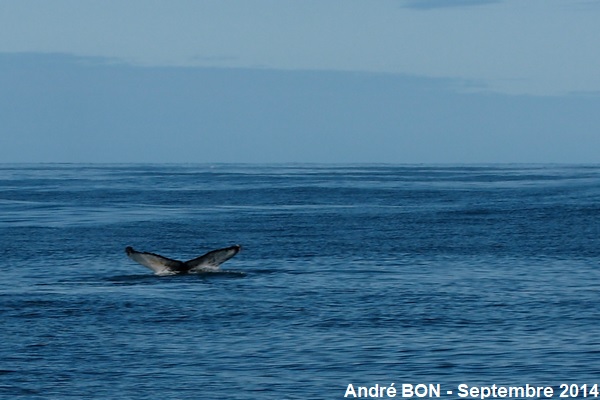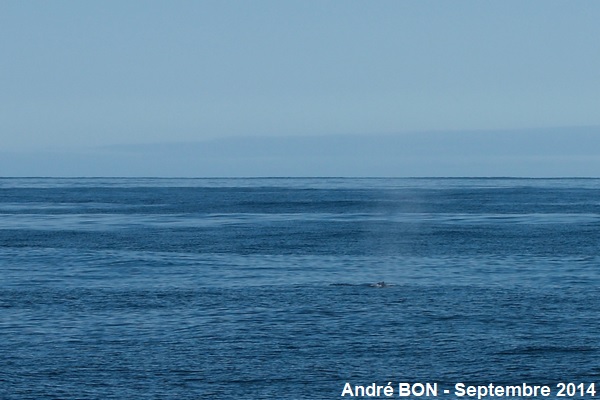

| Humpback Whale (Megaptera novaeangliae (Borowski, 1781)) |


|
|
Scientific name: Megaptera novaeangliae (Borowski, 1781) Common name: Humpback Whale French name: Baleine à bosse Family: Balaenopteridae Size: Body size: 11 to 17.5 metres longs for males, up to 19 metres for females, when adults; Weight: 25 to 35 tons. Biotope: Oceans, offshore and in coastal areas, in hot and cold water. Food: Fishes and krill. Longevity : 30 to 40 years. Geographic area: Oceans worldwide, only missing in the Arctic area and in semi-closed seas. |
The Humpback Whale has a stocky body, very dark grey to black on the upper side and white on the underside with a few black spots. The pectoral fins are very long and can reach 4 to 5 meters. The underside of the caudal fin has a white and black pattern which is characteristic of each individual and which can be used as a "fingerprint". The head is short, flattened, and covered with tubercles. The name Humpback Whale comes from the fact that it shows its rounded back out of water when it dives before showing its tail. |
| [To know more about the Humpback Whale] [Next picture] [Top] |

|
After watching a few Minke Whales we had the chance to catch a glimpse of a Humpback Whale. I was hoping to have a nice view of the tail when the whale dived but we haven't seen better than this picture. |
| [To know more about the Humpback Whale] [Previous picture] [Top] |

|
This Whale was spotted from a distance by a member of the crew who detected his breath with his binoculars. Here is one picture of the breath. This does not seem very easy to see. |